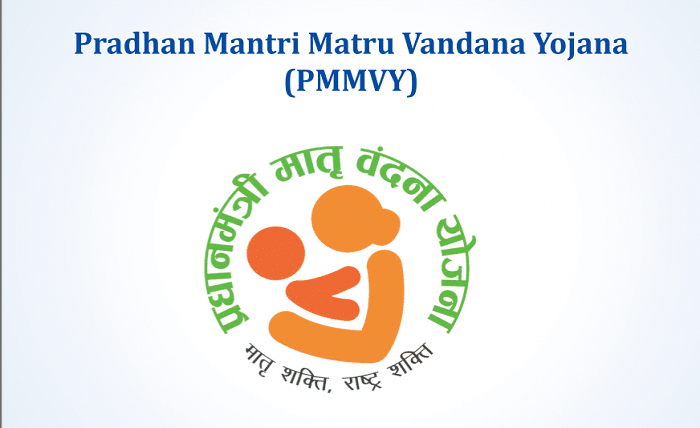Pradhan Mantri Matru Vandana Yojana (PMMVY): Full Guide to Benefits, Eligibility, and Application

What is PMMVY and Why Is It Important?
PMMVY, short for Pradhan Mantri Matru Vandana Yojana, is a government scheme aimed at supporting pregnant and lactating women in India. Launched in 2017 under the Ministry of Women and Child Development, PMMVY provides a direct cash benefit to help ensure proper nutrition and rest during and after pregnancy. The PMMVY scheme targets the first live birth and offers financial assistance to reduce maternal and infant mortality. By emphasizing health and well-being, PMMVY contributes significantly to the overall goal of national development.
PMMVY helps bridge the gap between healthcare needs and financial constraints faced by women, especially in rural and economically weaker sections of society. The government understands the importance of maternal health, and PMMVY is one of the flagship programs supporting this mission.
Objectives and Key Features of PMMVY
The main objective of PMMVY is to provide partial wage compensation to women for wage-loss during childbirth and childcare. PMMVY ensures that the mother can take adequate rest before and after delivery, which is crucial for her and her child’s health. The scheme also promotes institutional delivery and proper immunization for both mother and child.
Under PMMVY, a cash incentive of ₹5,000 is provided in three installments. The first installment is given during pregnancy, the second after childbirth, and the third after the child’s first immunization. PMMVY is designed to complement other maternity benefits and improve nutrition outcomes by supporting women financially during this critical phase.
Additionally, PMMVY promotes better awareness among women regarding prenatal care, infant feeding, and overall maternal health. It serves as a practical initiative to combat malnutrition and strengthen maternal healthcare systems.
PMMVY Eligibility Criteria: Who Can Apply?
To benefit from the PMMVY scheme, applicants must meet certain eligibility conditions. PMMVY primarily supports the first live birth and aims to assist pregnant and lactating women across India. Below are the eligibility requirements for PMMVY:
- The woman should be 19 years or older at the time of pregnancy.
- PMMVY applies to only the first live birth.
- The beneficiary should be registered at an Anganwadi Centre (AWC) or a government-approved health facility.
- The woman must adhere to the prescribed timelines for availing each installment under PMMVY.
PMMVY also includes certain conditionalities related to antenatal checkups and immunization. Women employed in the central/state government or those already receiving maternity benefits under any other law are not eligible for PMMVY benefits.
PMMVY ensures that eligible women are compensated for wage-loss and can focus on their health and that of their child without financial worry.
PMMVY Registration Process: Step-by-Step Guide
Enrolling in the PMMVY scheme is a straightforward process, but applicants must follow specific steps to ensure smooth registration. Here’s how to register for PMMVY:
Step 1: Registration
Visit your nearest Anganwadi Centre (AWC) or approved health facility and ask for the PMMVY application form. Alternatively, PMMVY registration can be done online through the PMMVY software application, accessible to authorized personnel.
Step 2: Submission of Form 1-A
This form must be submitted along with supporting documents to receive the first installment under PMMVY. Form 1-A includes pregnancy details, Aadhar number, bank account info, and other vital information.
Step 3: Submission of Form 1-B
After childbirth and registration of birth, Form 1-B must be submitted to claim the second installment under PMMVY.
Step 4: Submission of Form 1-C
After the child receives the first cycle of immunization (BCG, OPV, DPT), Form 1-C should be submitted for the third installment under PMMVY.
Timely registration and documentation are essential for successfully availing all benefits under PMMVY. Applicants should retain acknowledgment slips and contact the AWC or health facility if any delay occurs.
Documents Required for PMMVY Application
PMMVY applicants must provide accurate and complete documents to ensure successful processing. Below are the mandatory documents required to apply for PMMVY:
- Aadhar Card – For identification and verification purposes.
- Bank Passbook – A valid bank account is required for direct cash transfer under PMMVY.
- Mother and Child Protection (MCP) Card – Issued by the health facility or AWC.
- Residence Proof – Documents such as ration card, voter ID, or utility bill.
- Passport-sized Photographs – Recent photos of the beneficiary.
The PMMVY application is incomplete without the submission of these documents. Beneficiaries are advised to ensure the consistency of information across all forms and documents to avoid rejection or delay.
Moreover, PMMVY documentation must be in alignment with the woman’s current pregnancy and birth registration records. Discrepancies can lead to non-payment or delays in receiving PMMVY benefits.
Benefits of PMMVY for Mothers and Infants
PMMVY provides critical financial and health-related advantages to both mothers and infants. The scheme’s benefits are not only monetary but also health-focused, contributing to better pregnancy outcomes. Here’s how PMMVY benefits the target group:
1. Financial Support
PMMVY offers ₹5,000 in three installments, helping women meet basic nutritional and healthcare needs during and after pregnancy.
2. Health Awareness
By promoting antenatal care and institutional delivery, PMMVY increases health awareness among pregnant women.
3. Infant Care
PMMVY indirectly contributes to child health through better maternal nutrition, breastfeeding practices, and immunization compliance.
4. Empowerment
PMMVY empowers women by recognizing their contribution to the family and society, reinforcing gender equality through financial aid.
5. Reduced Maternal and Infant Mortality
PMMVY aims to reduce mortality rates by ensuring that mothers and infants receive timely medical support and nutrition.
Thus, PMMVY acts as a social safety net that improves both short-term and long-term health outcomes for women and their children.
PMMVY Status Check and Installment Tracking
After applying for PMMVY, beneficiaries often wish to track the status of their application and installments. Here’s how to check the PMMVY status:
- Offline Status Check
- Visit the Anganwadi Centre or health facility where the PMMVY application was submitted.
- Inquire about the current status using your application ID or beneficiary ID.
- Online Status Check
- PMMVY status can be checked through the PMMVY CAS (Common Application Software) by officials.
- Applicants can also contact state-level PMMVY helplines or use mobile-based tracking (if available).
- Bank Statement Check
- Beneficiaries can check their bank account statements for PMMVY installment credits.
It’s crucial to regularly monitor the status to ensure timely receipt of PMMVY benefits. If there is a delay, applicants should immediately follow up with the concerned officer.
Tracking PMMVY payments helps ensure transparency and accountability in fund disbursement, strengthening trust in the system.
Challenges and Improvements in PMMVY Implementation
Despite the positive impact, PMMVY has faced several challenges in its implementation. Some common issues include delayed payments, technical glitches in the PMMVY software, insufficient awareness, and difficulties faced by marginalized communities.
One of the major hurdles is the lack of digital literacy in rural areas, which affects PMMVY registration and tracking. Furthermore, discrepancies in Aadhar details or bank account mismatches can delay payments. The multi-tiered approval process under PMMVY also adds to the delay.
However, the government has taken steps to address these concerns. Initiatives like PMMVY 2.0 have been proposed to streamline procedures and enhance benefits. Digital integration, simplified forms, and improved training for field workers are part of the improvement agenda.
By addressing these challenges, PMMVY can achieve better outcomes and provide seamless support to all eligible women, thereby strengthening maternal health infrastructure across the country.
Conclusion
The Pradhan Mantri Matru Vandana Yojana (PMMVY) is a transformative initiative aimed at promoting maternal and child health in India. By offering financial assistance during pregnancy and lactation, PMMVY ensures that women receive the support they need at a crucial stage in their lives. The scheme has not only reduced maternal and infant mortality but also empowered countless women across the country.
From eligibility to documentation and benefit tracking, every aspect of PMMVY has been designed to facilitate better health outcomes. With continued government focus and improved implementation, PMMVY is set to make an even greater impact in the years to come.
Whether you’re a first-time mother, a healthcare worker, or a policy advocate, understanding PMMVY is essential for fostering a healthier, stronger society.
FAQs
1. What is the full form of PMMVY?
PMMVY stands for Pradhan Mantri Matru Vandana Yojana, a maternity benefit scheme launched by the Indian government.
2. How much money is given under PMMVY?
Under PMMVY, a total of ₹5,000 is given in three installments during pregnancy and postnatal care.
3. Can I apply for PMMVY for my second child?
No, PMMVY benefits are applicable only for the first live birth of the woman.
4. Is PMMVY available for women working in the private sector?
Yes, PMMVY is available for women working in the unorganized sector. However, women already receiving paid maternity leave from employers may not be eligible.
5. What should I do if my PMMVY installment is delayed?
If your PMMVY installment is delayed, visit your local Anganwadi Centre or health facility and check the status using your application ID. You can also contact the state-level PMMVY helpline.




